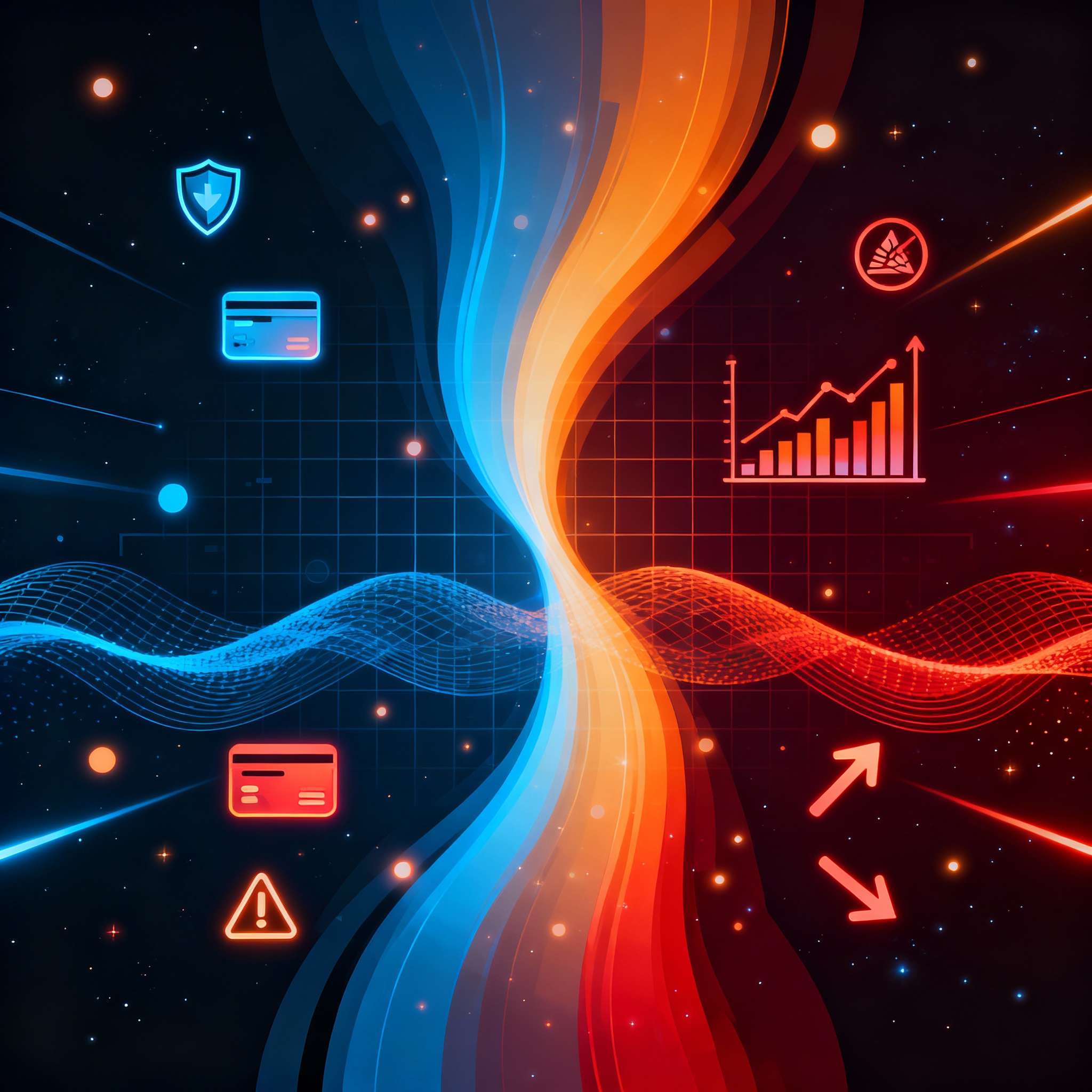
What RAG Means for the Future of Marketing Content and SEO
What RAG Means for the Future of Marketing Content and SEO
A recent study from Ahrefs revealed that 67% of ChatGPT's top 1,000 citations are inaccessible to marketers, highlighting a critical gap in AI's ability to pull reliable data according to Ahrefs' analysis of ChatGPT's citations. This statistic underscores a growing challenge: while generative AI tools promise efficiency, they often fall short on accuracy and context. Enter Retrieval-Augmented Generation (RAG), a technique that's poised to bridge this divide in marketing content creation and search engine optimization.
RAG isn't just another buzzword in the AI lexicon. It enhances large language models by retrieving relevant information from external sources before generating responses. This hybrid approach ensures outputs are grounded in real data, making it particularly valuable for marketers who need to produce high-quality, fact-based content at scale. In this post, we'll explore what RAG brings to marketing, how it intersects with SEO, and why it's set to define the next era of digital strategies. Whether you're a content creator, SEO specialist, or SaaS entrepreneur building AI tools, understanding RAG could be key to staying ahead.
Understanding RAG in the Marketing Context
At its core, RAG works by splitting the generation process into two steps: retrieval and augmentation. First, the system queries a knowledge base—such as a vector database or document repository—to fetch pertinent information. Then, it feeds this data into a generative model to produce coherent, informed content. This method contrasts with standalone generative AI, which relies solely on pre-trained knowledge and can hallucinate facts.
For marketers, this means generating blog posts, social media copy, or email campaigns that are not only creative but also verifiable. Imagine crafting a product description that pulls in the latest industry stats without manual research. Tools built on RAG, like those using Next.js frameworks such as ChatRAG, allow developers to create chatbot agents that integrate seamlessly with marketing workflows. ChatRAG, for instance, provides a boilerplate for launching SaaS businesses focused on AI agents, making it easier to deploy RAG-powered content generators.
Recent advancements in RAG architectures have expanded its capabilities. A comprehensive survey on RAG enhancements and robustness outlines how modular designs improve retrieval accuracy, which is crucial for marketing teams dealing with dynamic data like trending keywords or consumer insights. By incorporating such architectures, marketers can ensure their content remains relevant amid fluctuating search algorithms.
RAG's Role in Content Generation
Content overload is a real issue in marketing. Teams often struggle to produce enough material to feed algorithms while maintaining quality. RAG addresses this by automating the research phase. For example, a marketer could input a prompt like "Write a blog post on sustainable fashion trends," and the RAG system would retrieve current articles, reports, and data points to inform the output.
This isn't theoretical—practical implementations are already showing results. In one scenario, a digital agency used RAG to generate SEO-optimized product pages for an e-commerce client. By pulling from a curated database of customer reviews and market analyses, the system created descriptions that ranked higher in search results. The key here is customization: RAG allows for fine-tuning the retrieval sources to match brand voice and audience needs.
Actionable insight: Start by building a knowledge base. Use tools to index your existing content library, competitor analyses, and public datasets. Then, integrate a RAG pipeline—perhaps via an open-source library like LangChain—to automate generation. This setup can reduce content creation time by up to 50%, based on industry benchmarks.
Moreover, RAG mitigates risks associated with AI-generated content. Generative models without retrieval can produce outdated or incorrect information, leading to SEO penalties from search engines that prioritize expertise and authority (E-E-A-T principles). Insights from a study on Retrieval-Augmented Generation with Graphs (GraphRAG) demonstrate how graph-based retrieval enhances contextual understanding, making content more authoritative and less prone to errors.
Enhancing SEO with RAG
SEO is evolving rapidly, especially with the rise of generative search engines. Traditional keyword stuffing no longer cuts it; search now favors natural, informative content that answers user queries directly. An article on why generative engines are the new gatekeepers of discovery explains how AI-driven search is shifting visibility from traditional results to synthesized answers, putting pressure on marketers to adapt.
RAG fits perfectly here. It enables the creation of content that's optimized for both human readers and AI parsers. For instance, by retrieving schema markup data or semantic web elements during generation, RAG can produce pages that align with structured data requirements, boosting rich snippet appearances.
Consider voice search optimization. With devices like smart assistants pulling answers from generative engines, content needs to be concise and factual. A RAG system could retrieve top-ranking snippets and augment them into longer-form content, ensuring your brand appears in those zero-click searches.
Practical example: An SEO team at a tech firm used RAG to analyze query intents from search console data. By retrieving similar queries and generating tailored meta descriptions, they improved click-through rates by 20%. To replicate this, audit your site's search performance, identify low-engagement pages, and use RAG to refresh them with retrieved insights.
Furthermore, research on RAG's application in various domains highlights its potential for personalized SEO strategies. Marketers can build RAG models that adapt to user behavior data, creating dynamic content that evolves with trends.
Challenges and Future Implications
While RAG offers immense promise, it's not without hurdles. Retrieval quality depends on the underlying database's relevance and freshness. Poorly maintained sources can lead to biased or outdated content, which is a risk in fast-moving fields like marketing. Additionally, implementing RAG requires technical know-how, though platforms like ChatRAG simplify this for SaaS developers by providing pre-built components for Next.js apps.
Looking ahead, RAG could integrate more deeply with emerging tech like multi-modal AI, incorporating images and videos into retrieval processes. This would revolutionize visual content marketing, such as generating SEO-friendly alt text or video scripts based on retrieved multimedia data.
Findings from EMNLP on RAG's robustness suggest that future iterations will focus on error correction and ethical AI, ensuring generated content aligns with brand values and regulatory standards. For SEO, this means content that's not only optimized but also trustworthy, helping brands build long-term authority.
As generative engines become the norm, marketers who leverage RAG will have an edge. They'll produce content that's discoverable, engaging, and scalable, turning AI from a tool into a strategic partner.
Key Takeaways
In summary, RAG is transforming how marketers approach content generation and SEO by ensuring accuracy, relevance, and efficiency. Here are the main points to remember:
- Build a Strong Foundation: Curate high-quality knowledge bases for effective retrieval.
- Integrate Seamlessly: Use frameworks like ChatRAG to deploy RAG in your SaaS products for marketing applications.
- Optimize for the Future: Focus on AI-driven SEO tactics, such as intent-based content and structured data.
- Stay Adaptive: Monitor advancements in RAG architectures to keep your strategies cutting-edge.
- Measure Impact: Track metrics like content production speed, search rankings, and engagement to quantify RAG's benefits.
By embracing RAG, marketing teams can navigate the AI landscape with confidence, creating content that resonates and ranks.
Ready to build your AI chatbot SaaS?
ChatRAG provides the complete Next.js boilerplate to launch your chatbot-agent business in hours, not months.
Get ChatRAGRelated Articles

Building Academic Paper Discovery Systems with Retrieval-Augmented Generation
Academic researchers often drown in vast seas of publications, struggling to find relevant papers quickly. Retrieval-Augmented Generation (RAG) addresses this by combining search precision with generative AI, making discovery more efficient. This post dives into building such systems, drawing from recent studies and tools.

Implementing RAG in Financial Fraud Detection: A Developer's Guide
Financial institutions lose billions annually to fraud, but emerging AI techniques like Retrieval-Augmented Generation (RAG) offer a powerful way to stay ahead. In this guide, we delve into how RAG integrates real-time data retrieval with generative AI to detect anomalies and prevent scams. Developers will find step-by-step insights to implement these systems effectively.

The Automotive Technical Documentation Challenge RAG Was Built to Solve
Automotive technical documentation is vast and complex, often leaving mechanics buried in manuals. Retrieval-Augmented Generation (RAG) offers a solution by combining AI retrieval with generation for precise, context-aware responses. This post dives into how RAG tackles these challenges in the automotive sector.